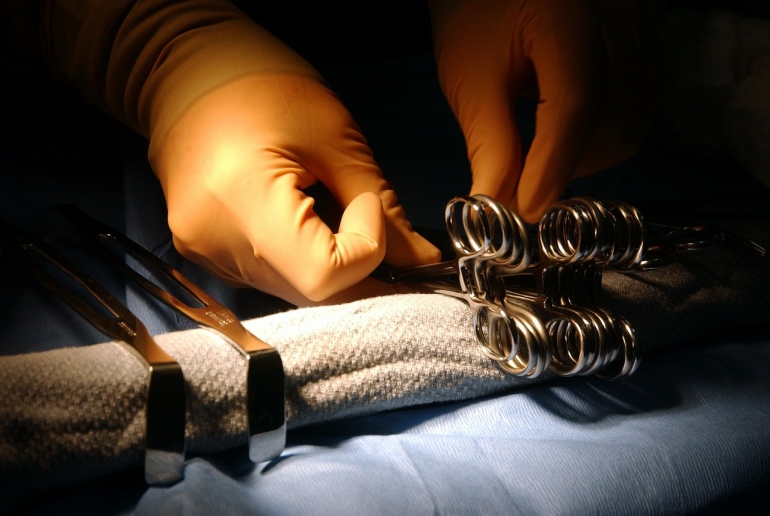According to BLS, the job growth rate of sterile processing technicians from 2012 to 2022 will be 20 percent. Under this observation, it is apt to state that the field holds great scope for new entrants. Constant technological advancements in medical devices and instruments are the driving factor behind the increasing demand for highly trained central service technicians.
Despite their low profile, the sterile techs are the heartbeat of the hospital. They operate behind the scenes to make sure that all equipment and medical supplies are ready for physician’s use. They are responsible for cleaning, disinfection, sterilizing, assembling and organizing the instruments needed for patient care, especially those used in surgeries.
In case the instruments are not properly organized and available in trays, patients could be at risk of catching infections. This will also result in a delay of services as the nursing staff looks for appropriate tools.
Scope for sterilizing technicians
These meticulous individuals are in charge of essential medical supplies. They get to work closely with physicians, nurses, and other medical professionals.
As we mentioned earlier, the role of sterilization technician is likely to expand in the future of medicine. People are getting more conscious about the decontamination of medical instruments. And there is no way that the industry could progress without equipment. So, there will always be work for sterilization technicians.
Following are a few industries that will always have high levels of employment opportunities for these experts:
- General medical and surgical hospitals
- Dental clinics
- Laboratories
- Pharmaceutical industry
- Outpatient care centers
Sterilization technicians – career and education overview
Being a sterilization technician asks for attention, concentration, and a bunch of responsibilities. However, the career will continue to grow as more people secure medical insurance and number of surgeries continues to increase.
Regarding the education of a sterilization technician, you must know the basics of how to enter into the field and proceed further. For starters, you need to clear the exam of Certification Board for Sterile Processing and Distribution (CBSPD) or International Association of Healthcare Central Service Material Management (IAHCSMM).
These courses will help an individual to gain expertise in handling various sterilization techniques. Apart from that, they will have the training of essential infection control methods and how to keep their equipment sterile.
Another essential feature of the programs is that it works to build a background in microbiology and biochemistry. This helps participants learn how to maintain a hygienic environment in the medical facility.
Interested people can research about the career options in this field. Many schools offer a certificate upon completion, and some also provide an associate degree. These certificate programs may vary from as little as 28 hours to as many as 200 hours of training. A few of them help participants to get networking opportunities and real experience by offering clinical practices. Additional hours of clinical experience integrated with brilliant scores on SPD Exam can open a broad horizon of opportunities for you.
Lastly, it is also important to note that if you are completely new to the sterile processing department, you must undergo at least one year of training to understand the job responsibilities fully.
Course components
Given the nature of the job, disastrous consequences might occur due to slight human errors. Hence, sterilization technics must be aware of what they are doing. The courses deal with theoretical knowledge where you learn basic medical information. Along with that, other areas deal with specific job requirements such as disinfection, cleaning and storage of medical equipment.
Typically, the courses comprise of two parts. The first term deals with theoretical learning whereas, in the second one, the future technics operate in the laboratory or hospital settings. While the duration for each term may vary from one program to another, the basic motive stays the same. They all want to impart complete knowledge to the participants as well as provide them with hands-on experience.
Technicians must have flexible learning behavior
Even though the period of training is not so long, one must understand that it is impossible for you to hold an expert position in the field if you are not flexible enough. You have to remain in the learning loop throughout their career path.
To your avail, some institutes provide online courses on the subject so the technicians can continue with their education. You get to learn new ideas and theories in the field. These courses will help you to work on the clinician-authority relationship, grow your career and learn empowerment tactics.
Conclusion
When choosing sterilization processing as a career, one needs to grasp all aspects of the job. It comes with a whole lot of responsibilities. Although you will not have direct contact with patients, your work is going to play a phenomenal role in maintaining a functional hospital setting as well as the safety of the patients.
If the requirements of the job sound reasonable and you feel that you can grow in this field, then go for it.







